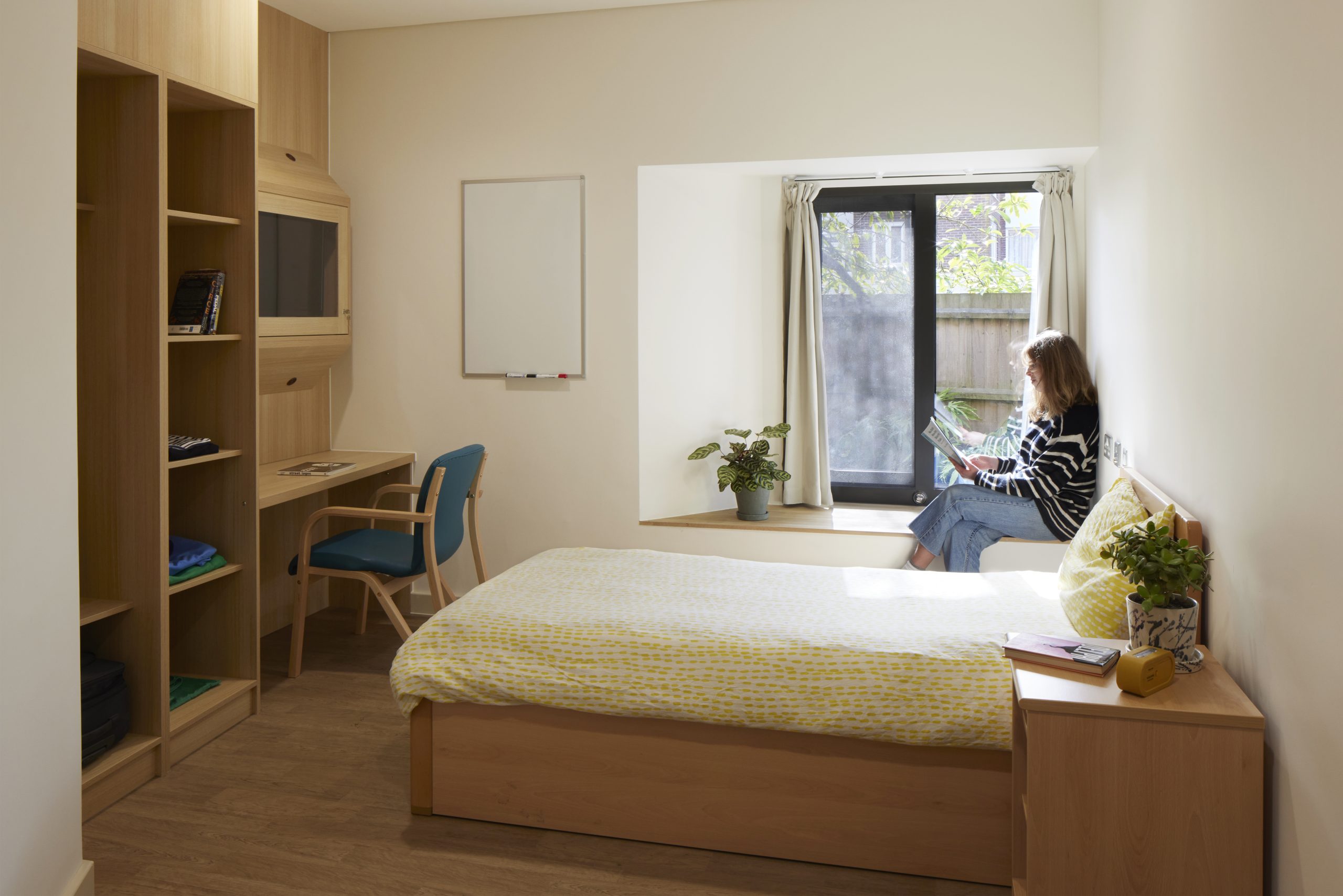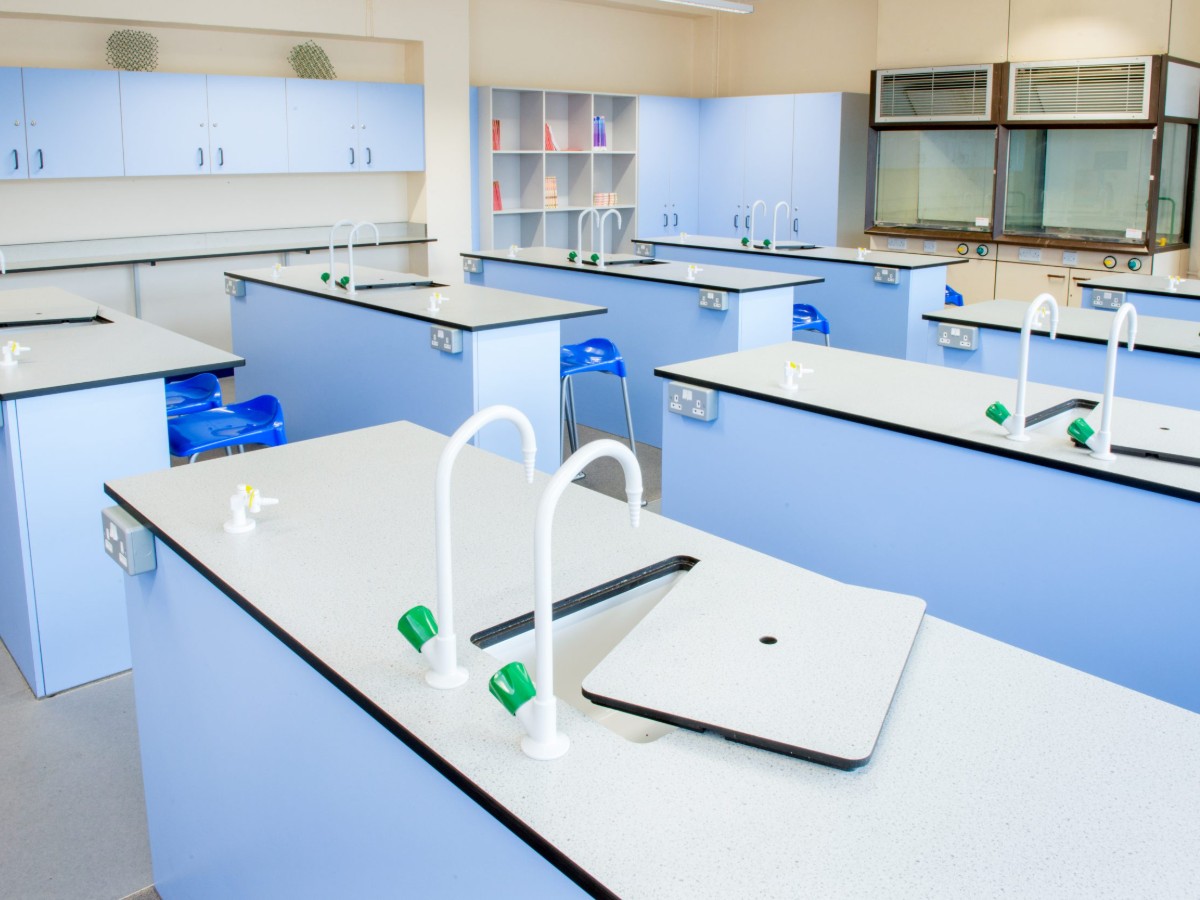Student accommodation has undergone a significant transformation in recent years. Once a basic necessity, frequently…

Schools take a lesson in fitted furniture
It is well recognised that a pleasing and functional work environment has positive effects on all who work in it. In the learning environment, this is even more crucial, however the role of fitted furniture in achieving this is often overlooked. Trevor Gillman of David Bailey Furniture Systems, one of the country’s leading designers, manufacturers and suppliers of specialist fitted furniture for schools, advises on the key factors and considerations to bear in mind when specifying fitted furniture for schools.
“Good design is not an accident. Students deserve the best possible learning environments, and teachers – a functional workplace,” remarks Trevor.
Factors to consider when specifying fitted furniture for schools
The design, quality, colour and layout of fitted furniture within any room are key to the overall look, feel and functionality of the space. When specifying fitted furniture for schools, it is important to consider the standard of durability needed, the layout, space and storage desired within a room, the safety level required and, of course, the look and feel one wants to create.
Durability
As is expected, property in schools need to withstand a lot of wear and tear; selecting robust materials reduces wear and tear and will ultimately save on maintenance costs.
Doors, worktops and shelving units in particular are the subject of a lot of abuse and must to hardwearing with a long life span.
Therefore all base and wall units are 18mm thick and of rigid dowelled construction. The choice of worktop will also determine the life of the unit. Postformed worktops are extremely durable and appropriate to classroom environments, while solid laminate and Iroko hardwood worktops are suited to laboratory applications, offering resistance to acid attacks, discolouration and heat.
It’s not just about durability, the look, colour and overall design of fitted furniture is also very important.
Does the requirement for durability outweigh aesthetics?
“No,” says Trevor Gillman. “Both are of equal importance. Obviously, durability is essential because it determines the long-term cost but equally the environment needs to be pleasing and welcoming. It is vital to strive to provide a bright crisp and clean look, while also maintaining the long-term endurance of the furniture.”
Aesthetics
When choosing and designing the layout of fitted furniture within a room, the objective is for the furniture to look like an integral part of the room. Smooth lines and keeping it simple but flexible is the key.
Colour
The use of colour is also important. Primary colours tend to stimulate, while pastel colours are inclined to have a more calming effect. In all cases, it is important to consider the use of the room and the mood one wants to create. In a Devon school for children with behavioural difficulties, David Bailey recommended a range of calming pastel colours for the classrooms. However, in another primary school, the use of bright and vibrant primary colours fitted the bill.
Space and storage
The availability of space is important. Schools need to facilitate ever-increasing numbers and accommodate many extra curricular activities, and therefore analysing the space requirement is increasingly complex. School classrooms need to provide room layouts that accommodate teachers, allow sufficient space for students to work effectively, and also facilitate the increasing demand for storage space.
Therefore, functionality needs to be thought of and built into the design and layout of the units. Having built-in units all around the room must leave space for walking or indeed running children. This is particularly critical in regard to smaller rooms.
The units need to preserve a sense of space and simultaneously provide plenty of storage. Clean lines and smooth integrated finishes provide this appearance, while cleverly designed storage units, such as pullout trays, corner units and tall storage trays, help achieve this. Many items in schools tend to be big and bulky, so maximising storage space is essential.
Within laboratories, a hexagonal unit (pictured) is specifically designed to help manage space. These types of designs allow several people to sit around the unit, thereby saving space and yet not impinging on functionality.
Safety
In schools, safety needs to be considered as a key priority. It is important to give an exact briefing to the designer and manufacturer so that it can design for the safety level needed. Elements to be considered include doors, handles and edges.
Doors
It is important that all cupboard doors open completely back on themselves and are hung on 170 degree high quality durable Blum metal hinges. This allows the door to ‘give’ if someone runs into it or, in the case of wall units, avoid nasty bumps on the head from cupboard doors left open.
Handles
To avoid clothes or fingers being caught, the use of either ‘D’ or recess handle is recomended. These do not protrude out further than the overhanging worktop and have no hook type features that can potentially cause injury.
Edges
All exposed edges of doors can be melamine edged to ensure a smooth finish. Alternatively, a 2mm PVC edging, which eliminates all sharp corners on doors and drawers is recomended.
Bespoke options
Finally, schools should not feel limited to off the shelf designs. Bespoke furniture should be considered to help achieve the best solution and this does not necessarily mean an increase in expenditure.
The Education furniture range by David Bailey Furniture is both durable and aesthetically attractive. It offers a comprehensive variety of storage units, bookcases and worktops, together with bespoke designs. All units are available with locks for added security and in a wide choice of colours.







